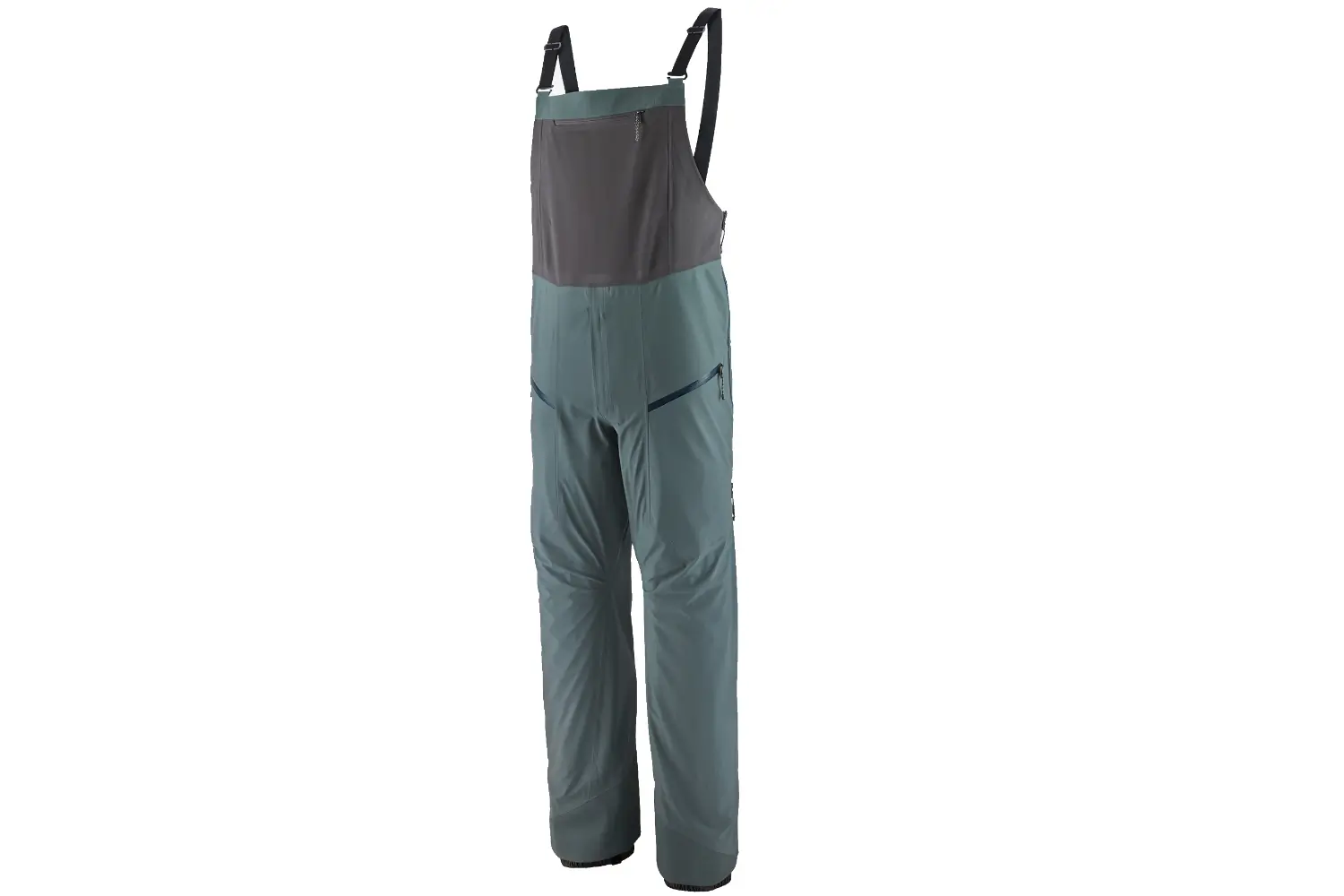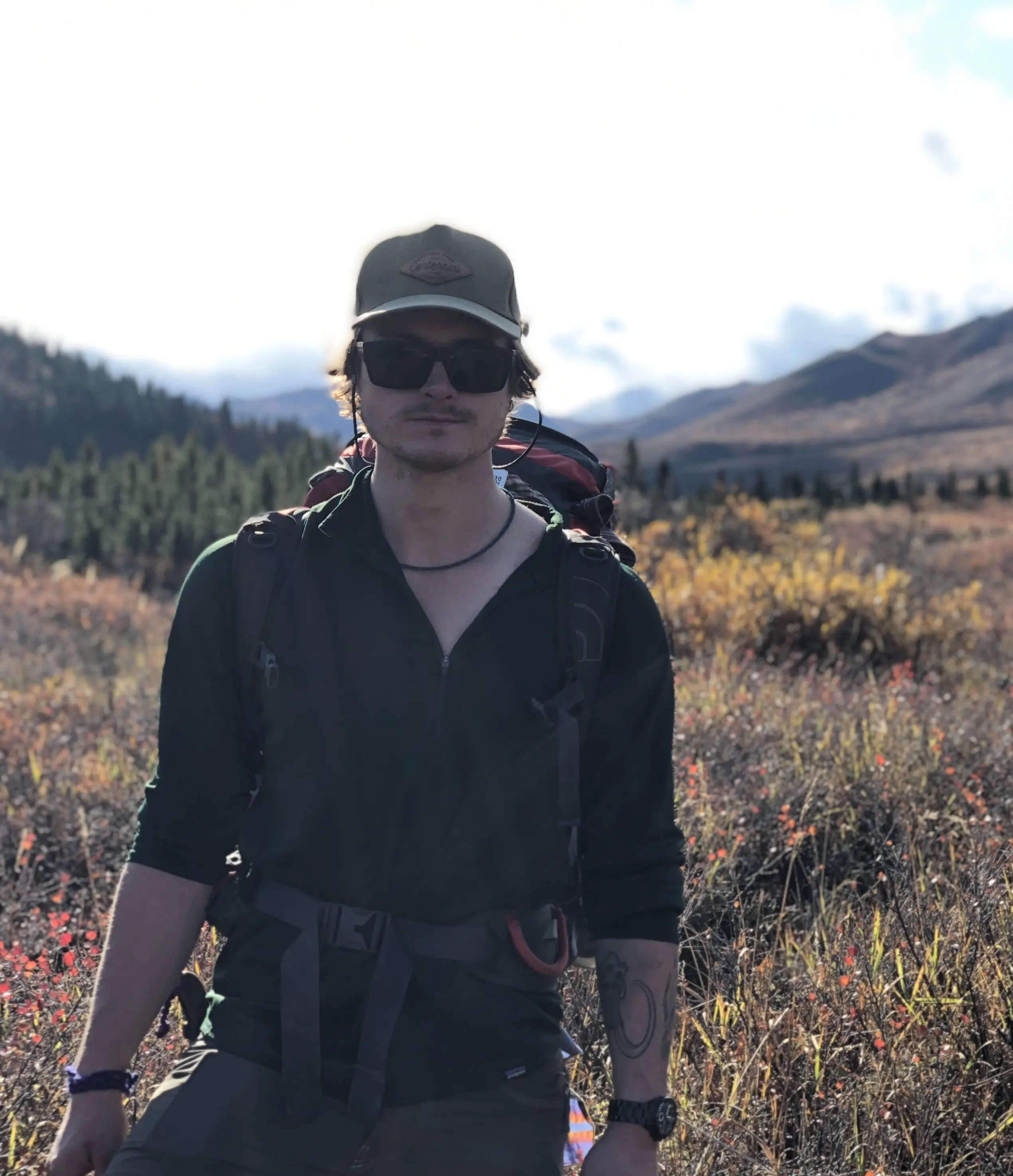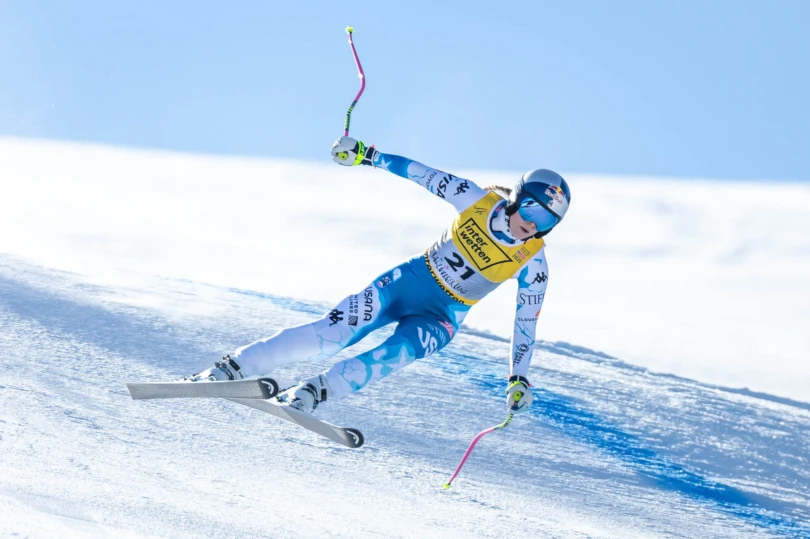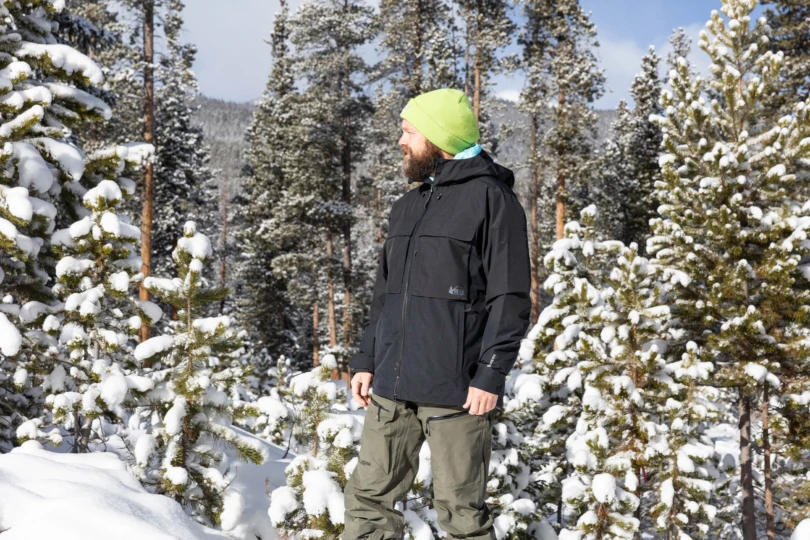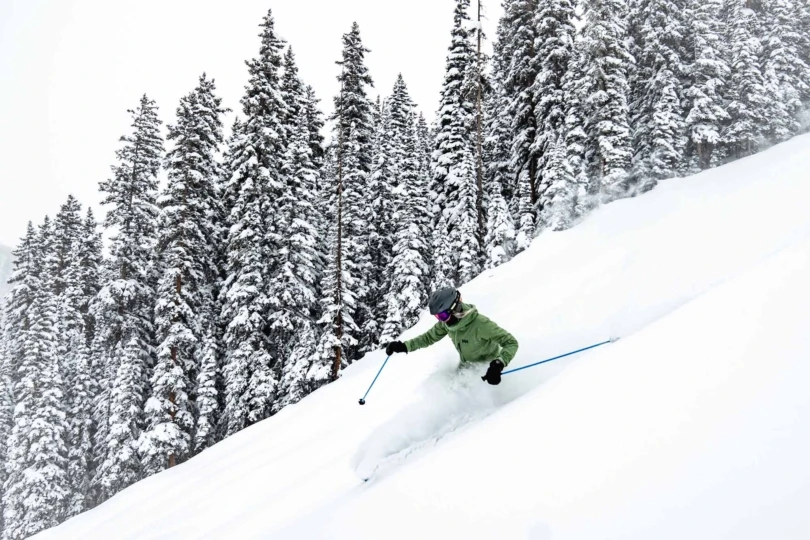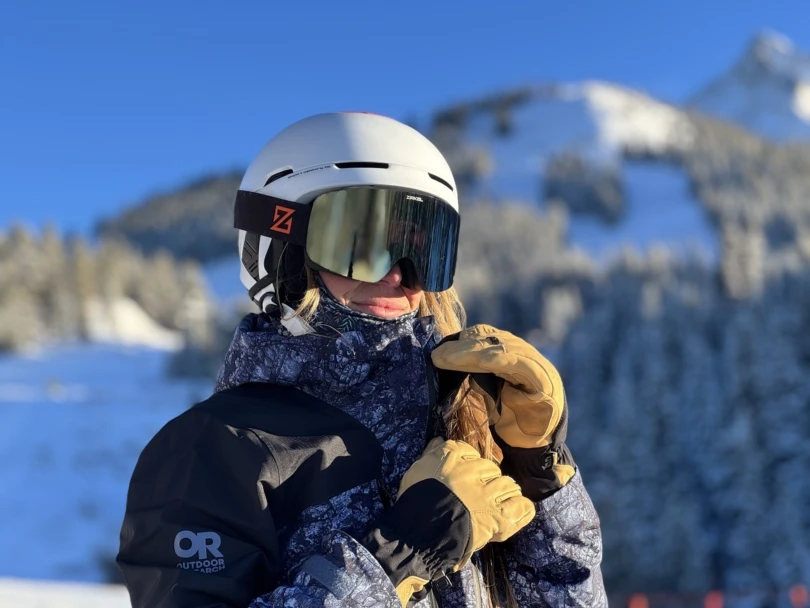The sun was out and I working up a sweat ski touring in Colorado’s Elk Mountains near 10,000 feet. I’d stripped down to a base layer and my Patagonia SnowDrifter Bibs. It was warm out — for now. But I’d already seen one “High Winds Advisory” warning on my phone. Later that afternoon, in just over an hour, it was supposed to get nasty.
I’d recently snagged a sample of the freshly updated Patagonia Men’s SnowDrifter Bibs to test a season in advance of their launch. So far, I’d worn the lightweight, backcountry-tailored bibs on freezing cold powder days in the resort and on clear bluebird days in the backcountry. I hadn’t worn them in serious wind. And I had my reservations about the three-layer H2No material of these stretchy, softshell-like trousers.
H2No is a proprietary standard that Patagonia uses to test its apparel to ensure substantial waterproofness and breathability. The tests are done in the field and lab across multiple years. It’s basically marketed as Patagonia’s proprietary waterproof, windproof alternative to GORE-TEX, a tall order to fill.
The SnowDrifter Bibs were also rocking an assembly of updates for winter 23/24, which I was excited to put to the test. Most notably, the fabric was overhauled to be 100% recycled polyester (up from the former 70% mark). The textile and membrane was now completely PFC-free and more stretchy.
The fit was adjusted to be roomier around the backside and upper quads. Plus, the look offered clean lines and a fresh aesthetic. These bibs (and the full kit) just look good. All of those same upgrades apply to the women’s SnowDrifter Bibs and Jacket, too.
My first impression? The shell layer felt thin. The bibs were also incredibly breathable. I hadn’t needed to open the dropseat leg vents, even after climbing uphill. Which was making me question how well the Patagonia SnowDrifter Bibs would hold cold air out.
The sun was out all the way to the top. But, I summited just in time for the weather to change on me. The sun disappeared behind a pale sheet of clouds. The air temperature dropped. Big gusts of wind shook the trees.
I descended. And the weather continued to worsen. A few minutes down, I stopped to layer up with a microfleece hoodie and an anorak shell. I pulled on the hoods and continued, waiting for my legs to start getting cold.
But, I was pleasantly surprised — they didn’t.
In short: The updated Patagonia Men’s SnowDrifter Bibs ($399) are among the best lightweight, sustainably made shell outwear I’ve come across for skiing. I tested them both in the resort and out of bounds, and they performed well in both settings — but they really excel on the uphill. They are very breathable; the stretch fabric improves mobility immensely and is lightweight. On top of all that, they’re windproof and waterproof. Though, I wouldn’t want to wear them too long in extremely wet or windy conditions.
- Weight: 650 g
- Size options: XS-2XL
- Fit: Regular
- Material: H2No 3-layer Standard Shell
- Shell: 121g 50-denier 100% recycled polyester stretch plain weave, recycled polyester knit backer, PFC-free DWR finish, Fair Trade Certified
- Type of zippers: YKK
Pros
- Breathable
- Stretchy with great mobility
- Lightweight
Cons
- Sizing is baggy on larger size
- Not ideal for very cold or very wet conditions
Patagonia Men’s SnowDrifter Bibs: Review
Unless it’s really warm and reliably dry out, I don’t normally need or like the feeling of soft-shell ski bibs. Or pants. Or, for that matter, jackets. I know, they’re usually lighter. And yes, they’re generally more breathable. And some are made with two-way stretch fabric, allowing wearers a lot more mobility.
I like my hardshell outerwear. I tend to trust its wind- and waterproofing.
However, I’d been getting too hot on my backcountry tours. As much as I love hardshell bibs like my Patagonia Untracked Bibs or the Arc’teryx Sabre Bibs, I don’t love sweating through and soaking my socks, underwear, and long johns.
Fortunately, the SnowDrifter is a hardshell that bridges the gap of those two worlds with a malleable softshell feel in a three-layer package that performs with the protection of a standard, durable membrane.
This bib is now made with stretchy 50-denier 100% recycled polyester (an update in 23/24 from the former 70% recycled material) and a completely PFC-free DWR finish. The fabric and membrane are totally PFC-free, too, for a product void of toxicity. There’s a soft knit backer (also fully recycled polyester), and the suspenders detach in the front for quick access, in addition to the drop seat. For pockets, there are two zippered cargo pockets on each thigh and one large zippered chest pocket. A RECCO reflector is included, too.
I put the Patagonia SnowDrifter Bibs through the paces at our GearJunkie 3-day ski test in blizzard and frigid conditions. I’ve since worn them on a bunch of different backcountry tours. As far as backcountry and touring outerwear go, I’m pretty sold so far. These bibs are what I reach for when I’m heading to a backcountry trailhead.
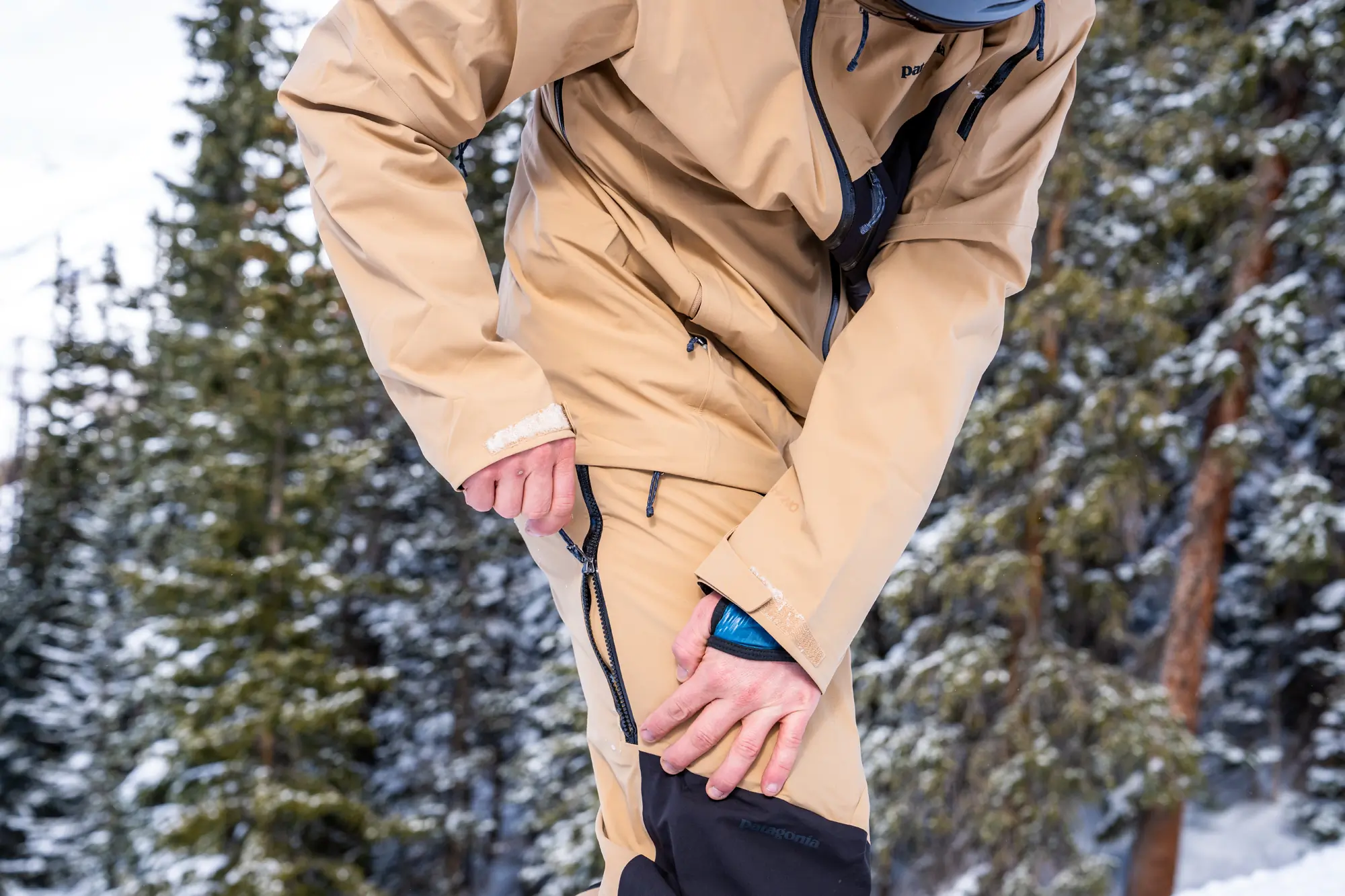
On the Up
I was really taken with the SnowDrifter Bibs’ performance on the uphill. Patagonia’s fabric here breathes, period.
The stretch in the 3L fabric is a nice touch that supports your range of motion. Taking some long steep steps up a skin track? No problem — the SnowDrifter will let you reach as far as your legs allow. Need to do some quick slope-side body-weight squats? These bibs will go as low as you can. Is your favorite song playing at the parking lot après party? Go ahead, get down.
If I do ever overheat in the SnowDrifter Bibs, fresh cool air is only a zipper (or two) away. The drop seat on these bibs has two water-resistant zippers (one on each side). The action is smooth. They haven’t gotten stuck on me. They don’t open up when I don’t want them to.
And, the SnowDrifter Bibs are light. It’s not as though my hardshell outerwear weighs me down. But I definitely notice how airy it feels to wear these stretchy pants.
I’d say that if there’s an area where these bibs shine, it’s on the uphill. I’ve been very pleased with how comfortable and easy these things are to tour in.
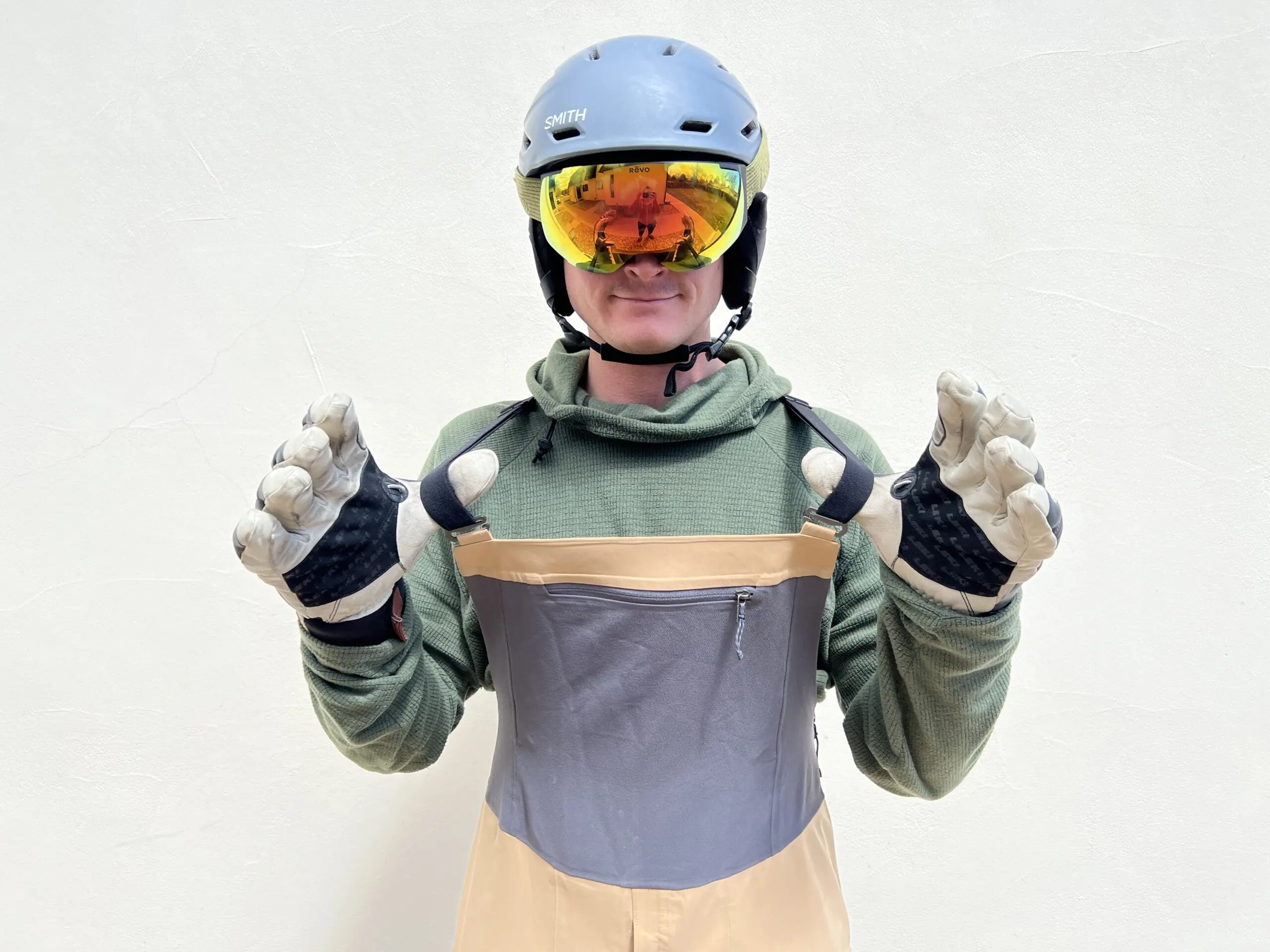



On the Down
Whether it was wind blowing against me, or air moving past me as I skied, the SnowDrifter Bibs were impressively good at blocking wind and cold air. For as light as they are, I expected to be getting blasted through them. However, that hasn’t been the case. I’ve taken them out in some pretty harsh wind and cold weather.
Are they as windproof as, say, the Arc’teryx Beta SV Bib? No. They certainly are not. But are they as or more windproof as the lightweight softshell bibs on the market? Yes. I’m not going to take the SnowDrifter out when I know it’s going to be a long day in gnarly cold conditions. But with enough and the right layers beneath, I probably could.
The waterproofing is also reliable (so far). I’ve been in some wet snow and some deep powder in these bibs, and they hold up. They aren’t rain pants, though Patagonia’s H2No Performance Standard upholds that the garment achieves at least a 20,000mm rating for waterproofness (that’s nearly the highest level for snow apparel) and can maintain a 10,000mm rating after extensive use.
For every backcountry tour I have found myself on so far, these pants are more than adequate on the downhill. They repel snow and block cold air, just like a pair of bibs should.
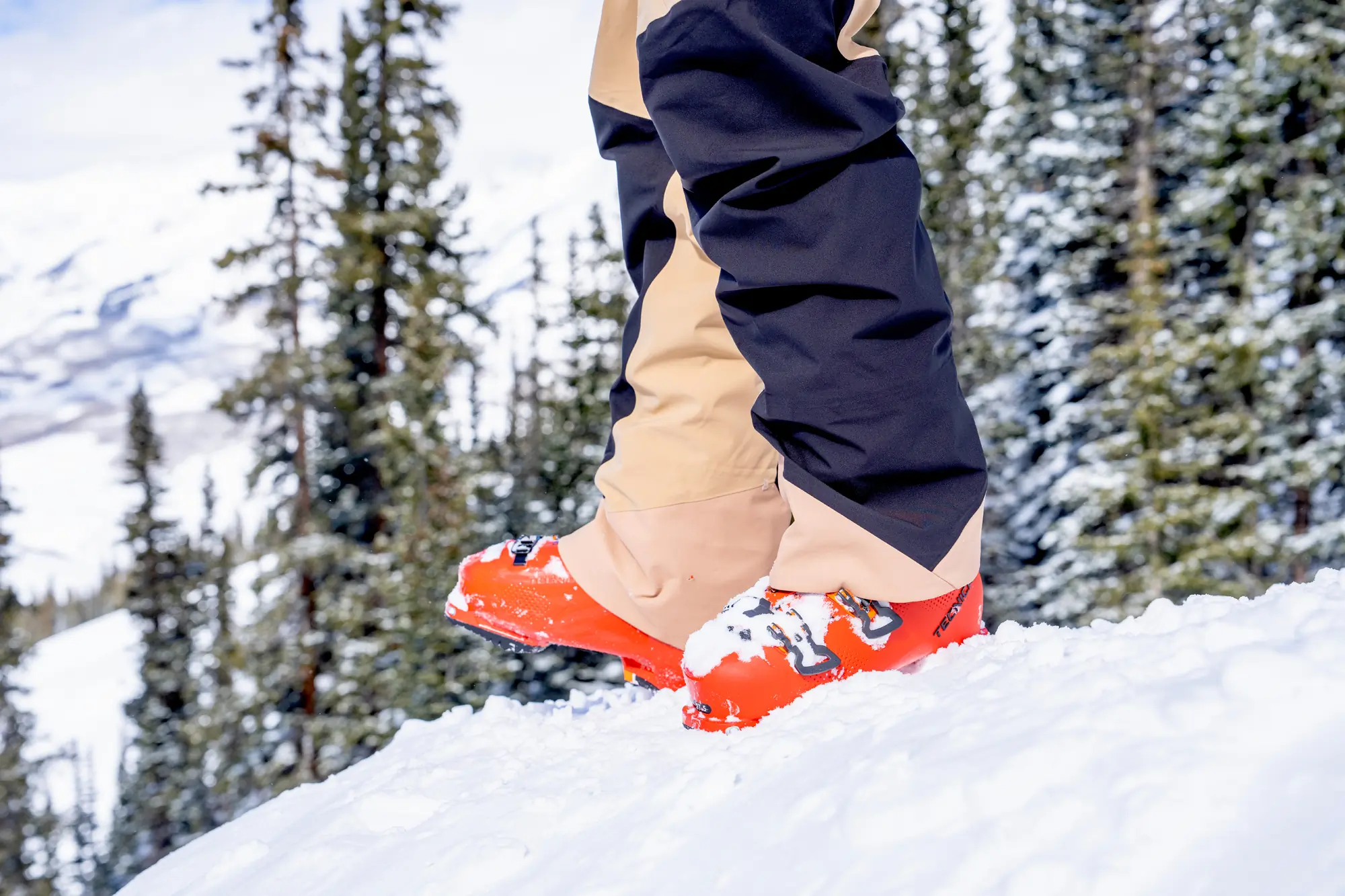



Fit
Patagonia often has an athletic, tailored silhouette to its clothing and apparel, but these are a slightly different variation. I normally wear a size large — I could get away with a medium in these (especially with the stretch factor). Maybe I should have. Sometimes these feel a little baggy. The hem of the legs comes down to my boots and drags just a little bit around the heel.
That said, if you like tighter-fitting outerwear, size down. Or at the very least, get yourself to a Patagonia outlet and try them on before you buy them.




Drawbacks
I am a strong advocate for belt loops on ski bibs. Why, you might ask? Because, simply, I like to put stuff in my front pouch.
I’m not talking about the pocket on the chest — I’m talking about inside the bibs right on my belly. Put skins there on the descent, and your body heat keeps them warm so they stick more easily at the bottom. Or, when I’m touring or transitioning, I stuff my ski gloves in there.
I wear a belt with my bibs to cinch my waist closed, so these items don’t fall down my pants. Without belt loops, I can’t do that as easily. If I want to wear them like pants, there’s no option to cinch the waist tighter. These bibs don’t even have a Velcro adjuster for the hips.
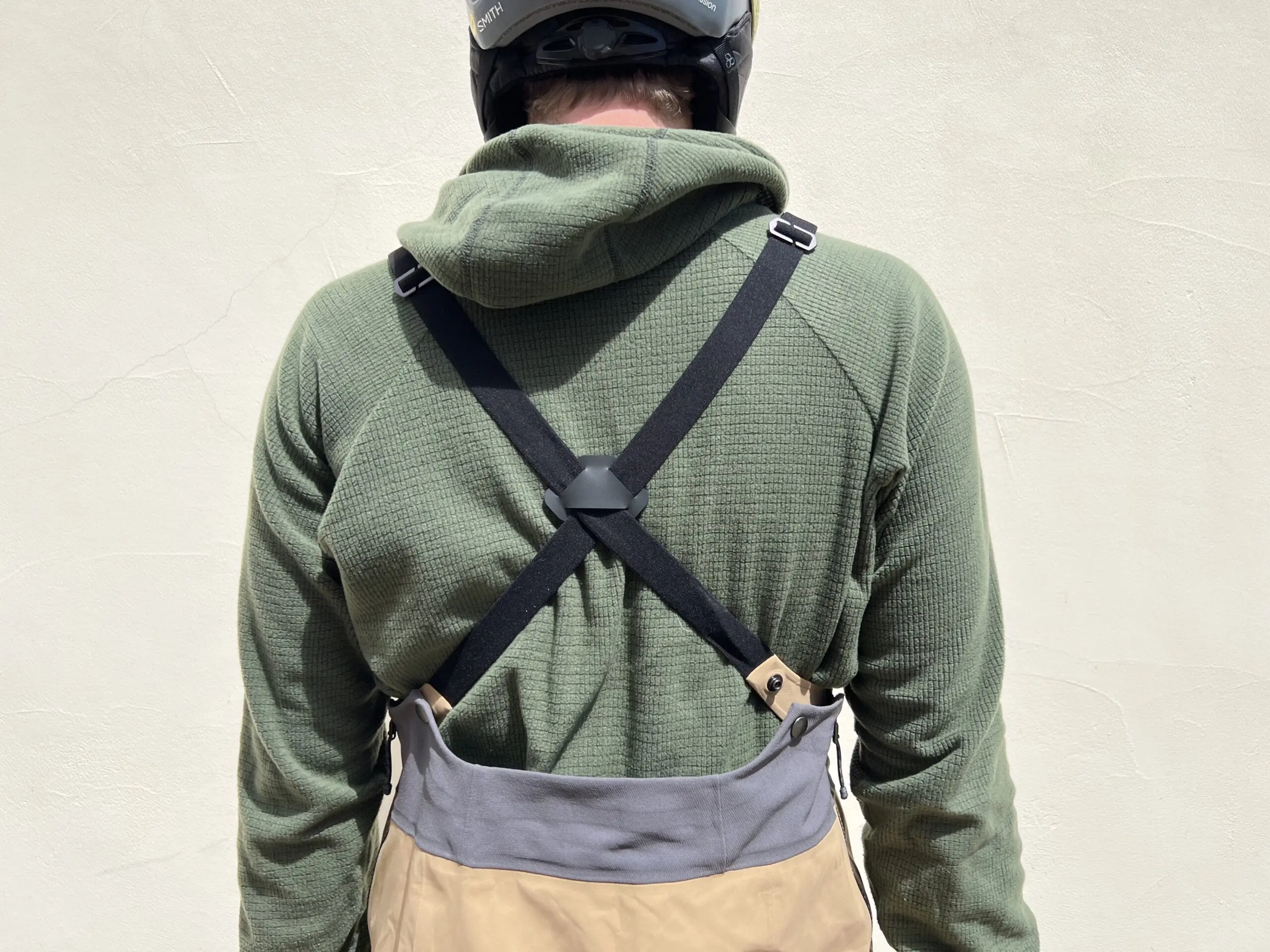



I’m also no fan of thin shoulder straps or shoulder straps that cross in the back. These bibs feature both of those design elements. Why not just use straight shoulder straps and make them wide enough to easily flip or untangle?
I’ll never understand it. The shoulder straps on the SnowDrifter Bibs have gotten twisted almost every time I’ve worn them. It doesn’t compromise performance at all. It just tends to be a little annoying untangling the straps every time I put them on.
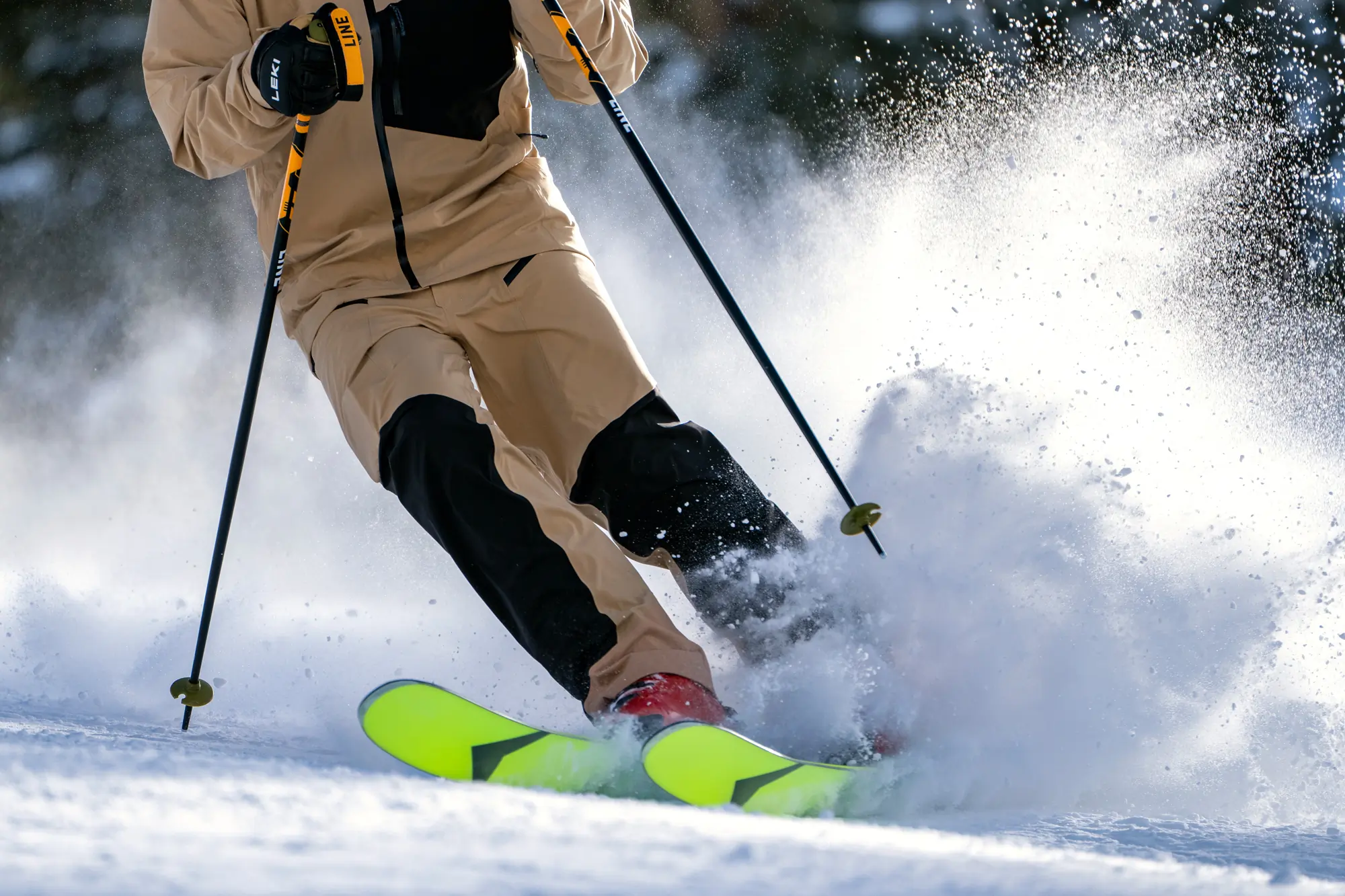



Patagonia Men’s SnowDrifter Bibs: Conclusion
The Patagonia SnowDrifter is a good bib for backcountry touring. They offer excellent mobility, breathe well, keep wind and water out, and they’re well-ventilated if you tend to get warm. Compared to Patagonia products that use GORE-TEX, these bibs are relatively affordable at $399.
Overall, these have become my primary touring bibs. The more I use them, the more I like them. Even though I’ve got hold-ups about the lack of belt loops and the shoulder strap layout, they’ve grown on me. I’m building a connection with them.
Honestly, I look forward to wearing them on a tour every time I pull up to a backcountry trailhead.
The updated Patagonia Men’s SnowDrifter Bibs will be available October 1, 2023. Don’t miss our full review of the new men’s Patagonia SnowDrifter Jacket on GearJunkie.
